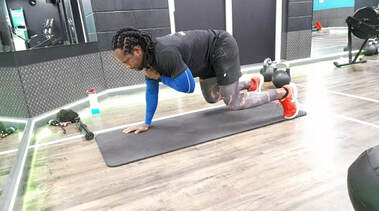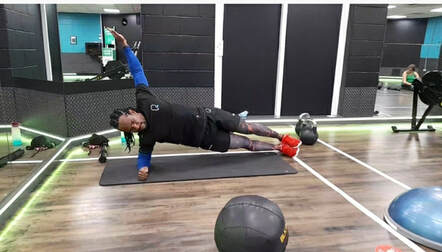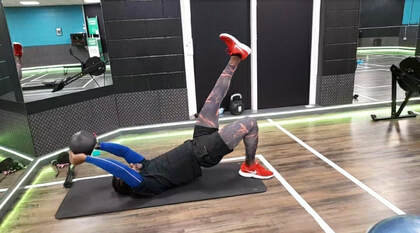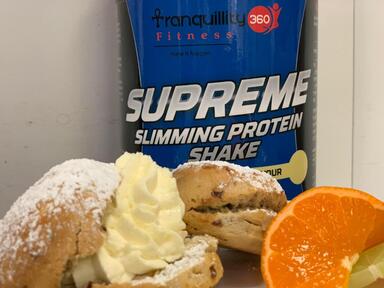 After a long locked down due to Covid 19 with lots of isolating, working from home and maybe too little physical activity, it might be time to give your core muscles more attention. These muscles, located throughout much of your trunk, are the key to supporting your lower back and helping you stand, get out of a chair, bend, lift, and maintain your balance. So regular maintenance and tune-ups of the core muscles are important. Your core muscles provide stability for the moving parts above and below them the mid back, or thoracic, spine that helps you twist and turn, and the hips that move you up, down, back, or forward. The core starts at the lower rib cage and extends to the buttocks. Core muscles in the abdomen include the long rectus abdominis muscles in the front; the external and internal obliques on the sides; and a wide, flat girdle in front called the transverses abdominis. In your back, a group of muscles called the erector spinae help you stand up tall. The gluteal muscles in the buttocks help you extend your leg, push off from a starting point, walk, and climb stairs.And in the pelvis area, the iliacus and the psoas muscles enable you to lift your legs and remain stable while standing; and the quadratus lumborum, a long muscle on each side, helps you bend to the side and back.The best core exercisesA much better approach to strengthening your core is working several core muscle groups at the same time, just the way you would naturally if you were lifting something or climbing. For older adults, recommends three exercises in particular: Bridges. " Anyone can do a bridge. You start in a recumbent position on your back and then lift and hold your buttocks off the ground. "It's effective because you create rigidity from the rib cage to the pelvis and all the way from the belly button around to the back. The whole region becomes solid, and it creates a contraction of all the muscle groups, like a corset." Planks. Planks create contractions of the core, arm, and shoulder muscles as you stay in a push-up position. The key is staying as stiff as you can, like a wooden plank. Opposite arm and leg raise. This exercise gets you on your hands and knees. "As you stretch out the opposite arm and leg, you're contracting your core and the muscles in the other arm and leg as they support you. "Movements should be slow and controlled; don't throw your arm and leg out as fast as you can." Getting started If you haven't worked your core in a long time, I would suggest starting slowly, focusing on the quality of the exercise and gradually increasing the number of times you can do it. Unlike some muscle groups that should only be worked out every other day, core muscles can be strengthened daily. "The core should always be working. It doesn't need a lot of recovery,". Remember to do a warm-up before strengthening. March in place for a few minutes and move your arms around to get the blood flowing. After strengthening, stretch your muscles, especially the hip flexors in the front of your pelvis and the hamstrings in the backs of the thighs. "We want the core muscles to be short and tight,” Tightness will give it stability. But we want the muscles that surround it to be flexible."
0 Comments
 When it comes to exercise, timing is everything — but not in the way we normally think about timing. What matters most is making the time to exercise regularly, not when it happens. That said, your personal experience and specific goals may influence what workout schedule works best for you. "If you're just starting a physical activity routine, any time that you feel motivated and energised enough to exercise is the best time for you. For some people, that's in the morning; for others, the afternoon works better. But if you can work out with a friend, choose a time that works best for both of you, she suggests. Teaming up with an exercise buddy is more enjoyable, and you can hold each other accountable. The morning advantages Exercising early in the day may have other advantages for reluctant or less-enthusiastic exercisers. If you wait until later in the day, it weighs on you all day long and you're more likely There’s evidence that exercising the first thing in the morning (before breakfast) helps people burn more stored body fat. But does that help people lose more weight? The jury's still out on that question. If you're trying to shed pounds, experiment on yourself. Exercise before breakfast for four weeks, then after breakfast for the next four weeks. See how you feel and whether one timing strategy helps you lose more weight than the other. Another potential benefit for early-bird exercisers is taking advantage of the "feel good" brain chemicals, dopamine and serotonin, that are released during physical activity. "That sets you up for success throughout the whole day and may increase your concentration and creativity,". Some research also suggests that people who exercise in the morning are more careful with their food choices throughout the day. to come up with excuses for not exercising. The argument for afternoon But for other people, an afternoon workout has certain advantages. If you're not a morning person, you'll probably prefer exercising later in the day. Plus, your joints and muscles will probably feel more limber in the afternoon than in the morning. Also, people often experience a mid-afternoon lull around 3 p.m. "Instead of having a snack or a cup of coffee, use exercise as a way to re-energise yourself,". And if you're trying to lose or maintain your weight, try doing a short burst of exercise as a distraction when you're craving a treat, no matter what time of day that happens. Food, drink, and sleep It's best to wait at least three hours after a large meal before exercising. But if you have just a small meal or snack, waiting an hour is fine. However, highly trained athletes who want to boost their performance often like to have a small, carbohydrate-rich snack — such as a banana or a slice of whole-grain toast — shortly before their workout. Carbohydrates provide quick fuel for short, high-intensity exercise.Exercise — particularly morning exercise — can be challenging if you're dehydrated, which can happen when you're not drinking enough water throughout the day on a routine basis. In fact, if you're dehydrated and not well fed from the previous day (or days) and you exercise before breakfast, you probably won't have enough energy for an enjoyable, effective workout. You might even become dizzy, which could be dangerous. Don't assume that simply drinking a big glass of water right before you exercise will do the trick; drinking fluids throughout the day is important. Getting at least seven hours of sleep each night benefits your health in many ways, and exercise can help. People who exercise regularly tend to fall asleep more quickly at bedtime (spend less time falling asleep) as well as spend less time lying awake in bed during the night. If you've had a poor night's sleep for any reason, you might feel too tired to exercise. If that's the case, try taking a nap (ideally before 3 p.m. and for only 20 to 30 minutes) and exercise afterwards. Shorter versus longer stints Finally, novice exercisers may find it easier to break their exercise into shorter chunks of time. "Even five minutes at a time counts toward your goal of 150 minutes per week,". Build up your endurance gradually. Once you're able to exercise for 30 minutes at a time, you can ramp up your speed and intensity — which boosts your calorie burn and cardiovascular health.  The two most common reasons people give me for not exercising is lack of time and not knowing what type of exercise they should be doing. This is one of the main reasons many people to hire a personal trainer—they want an expert to tell them how to achieve their goals. Typically, they also want to know how to do it in the most time-efficient manner possible. Now While single-joint, isolation exercises are ideal for people who have the inclination or time to sculpt the perfect body, they simply aren’t that effective for maximising the calorie burning effects of exercise. If a client’s goal is improving his or her overall fitness level, compound exercises that feature multi point movements involving more than a single muscle group can be extremely effective for realising benefits from all three categories of fitness: cardiovascular, strength and flexibility. Knowing how to use compound exercises can give you specific strategies and techniques for helping your time-strapped clients. Here are my top four benefits of compound exercises. Compound exercises improve intermuscular coordination. This is the function and timing of multiple muscles around a joint or joints. Consider, for example, the gluteal complex (gluteus maximus, Medius and minimus), which is responsible for controlling motion of the hip. Compound exercises such as squats, lunges or steps that move the hips in all three planes can improve how all the muscles work together to produce and control force. Compound exercises burn more calories. The body expends 5 calories of energy to consumer 1 litre of oxygen. Exercises that involve more muscle tissue require more oxygen, which helps the body increase its net energy expenditure. Compound exercises elevate the heart rate and provide a cardiovascular training benefit. The purpose of cardiovascular exercise is to improve the ability of the heart to function as a pump. This can be accomplished through activities such as running and cycling, or by doing exercises that involve a significant amount of muscle tissue. Sitting in a leg-extension machine doing knee extensions or performing biceps curls with dumbbells uses only a limited amount of muscle tissue; these exercises are more appropriate for focusing on isolated strength. Squats to shoulder presses, medicine ball chops or burpees are all examples of compound exercises that involve large amounts of muscle tissue, which challenges the heart to pump blood to keep the muscles fuelled and active. Compound exercises improve movement efficiency. Have you ever noticed that body builders move robotically? This is because training only one muscle group at a time does not teach multiple muscle groups to coordinate their contractions and firing rates, which is how muscles contract. Compound exercises that involve large groups of muscles teach the muscles how to coordinate the firing of the motor units responsible for timing muscle contractions. Compound exercises can help your clients improve their movement skills and dynamic balance, which can help improve overall quality of life.  Most people will thinks that it is logical, that the more protein you eat during a meal, the bigger your muscles grow. Because more is always better, right? Guest what, your body doesn’t necessarily work that way. There’s only a certain amount of protein that your muscles can absorb in one sitting of meal. Skeletal muscle protein synthesis is maximized by 25 to 35 grams of high-quality protein during a meal. Protein synthesis is basically a fancy way of saying “building and repairing muscle. Exercise creates micro-tears in your muscles. The harder you work, the more of these tears occur. Protein helps to repair these tears, which then causes your muscles to grow bigger and stronger. If your muscles receive fewer than 25 grams of protein in a sitting, however, muscle tears brought on by exercise persist due to a lack of building materials. But if your muscles receive more than 35 grams of protein, they have all the building materials they need, and the protein goes to other parts of your body or into the toilet. In fact, if you’re piling your plate with too much protein, you might be pushing other vital nutrients out of your diet from foods such as vegetables, fruits, healthy fats, and whole grains, all of which can help with muscle recovery and weight loss. And you don’t have to down a huge shake of 800 plus calories or 2 grilled chicken breasts after a workout. Studies on protein timing show muscles’ elevated sensitivity to protein lasts at least 24 hours. Number of studies conduct both by Oxford and Cambridge university showed that muscle protein synthesis may continue for 24 to 48 hours post-workout, so trying to push everything in one meal sitting is just Ludacris The next question you will get is why those guys always walking around with protein shake in the gym, the fact is that most people are influence by what they see on the internet or by their favourite fitness model who are just trying to sell a product. Excess protein consumed is usually stored as fat, while the surplus of amino acids is excreted. This can lead to weight gain over time, especially if you consume too many calories while trying to increase your protein intake. |
AuthorsThis blog is updated by Tranquillity 360 fitness personal trainers, as well as other guest bloggers. Archives
July 2021
Categories |

 RSS Feed
RSS Feed